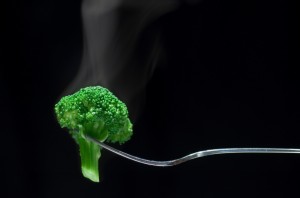 Taste is an important determinant of food ingestion, which, in turn, is one of the many factors relevant to the study of obesity. The tongue, as most would assume, has been the primary focus of research on taste for the last 20 years. However, today at the Obesity 2011 meeting, there was a fascinating symposium focusing on non-oral sensory receptors, specifically sweet and bitter taste receptors that are apparently present much further down the gastrointestinal tract than the tongue.
Taste is an important determinant of food ingestion, which, in turn, is one of the many factors relevant to the study of obesity. The tongue, as most would assume, has been the primary focus of research on taste for the last 20 years. However, today at the Obesity 2011 meeting, there was a fascinating symposium focusing on non-oral sensory receptors, specifically sweet and bitter taste receptors that are apparently present much further down the gastrointestinal tract than the tongue.
Dr. Robert Margolskee, a molecular biologist from Monell Chemical Senses Center in Philadelphia, began his presentation with an overview of taste receptors that we know exist in the tongue. On average the human tongue has 2,000 to 8,000 taste buds on the tongue and oral cavity. Within each taste bud there are approximately 50 to 100 taste cells, and these tongue taste cells are the initial chemosensors of the alimentary tract.
The tongue is known to differentiate five taste qualities, each of which are mediated by different taste receptors on the cells. The five tastes (and associated receptors) are:
1. salty (ENaC/Deg receptors)
2. sour (several receptors)
3. umami or savory (T1R1 + T1R3)
4. sweet (T1R2 + T1R3)
5. bitter (T2R)
Dr. Margolskee went on to review basic science research studies which show that there are also taste cells and receptors in the gut, specifically the small intestine and the pancreas. There are also multiple taste signaling proteins found in the gut, but these receptors don’t provide a conscious sense of taste. They may, however, integrate physiologic responses to digestion.
Margolskee, who discovered gustducin (a G protein important in tasting bitter tastes), described how it is found in the tongue and also other cells throughout the foregut including alpha cells in the pancreas. Basically, every taste signaling molecule that is present in the tongue is also found in the gut enteroendocrine cells, and not only are these taste signaling elements present, but they are also functional.
Experiments conducted in mice suggest that these gut taste receptors may play a role in regulating endocrine function. Sucralose and other artificial sweeteners promote insulin secretion from pancreatic islets in the same way that glucose does, in a dose-dependent fashion. A strain of mice who do not produce gustducin have dysregulation of glucose, insulin and GLP-1 in response to glucose delivered directly into the stomach. So, although artificial sweeteners have zero calories, they are not necessarily metabolically inactive, and may have long-term clinical effects that are as yet, unknown.
In addition, Dr. Timothy Osborne from the Sanford-Burnham Institute gave a presentation in this symposium with focused on bitter taste receptors, and he emphasized also that taste receptors are intertwined with metabolism in very interesting ways, that are just starting to be understood. Bitter tasting appears to be much more complex than sweet, and at least 35 genes affect bitter tasting in mice and at least 25 genes in humans. Scientists, such as Osborne, studying bitter taste use the most bitter substance in their experiments: phenylthiocarbamide (PTC), which is found in green vegetables such as broccoli. Interestingly, only 70% of people can taste PTC, which may affect their vegetable consumption.
Dr. Osborne reviewed some studies on bitter tastant-induced signaling in the mammalian gut. mRNA transcription of bitter receptors in the gut has been previously demonstrated, and recently Osborne has confirmed actual expression of these bitter receptor proteins in the small intestine of mice. Osborne has shown that bitter substances stimulate secretion of gut peptides such as cholecystokinin (CCK) and glucagon like peptide 1 (GLP-1).
Although it is widely believed that rodents don’t vomit, the presence of bitter tasting receptors in the gut is thought to represent an extra protective mechanism to prevent absorption of toxic bitter molecules if they get past the tongue. The bitter-stimulated release of CCK and GLP-1 will induce vomiting, delay gastric emptying, and decrease hunger leading to decreased consumption of the bitter (and potentially toxic) substance, as a protective mechanism.
In addition to taste cells existing lower down the gastrointestinal tract than previously thought, Margolskee also presented data showing that there are also endocrine cells in the tongue, which secrete a variety of gut hormones including glucagon, GLP-1 and PYY. He is now starting to study these gut taste receptors in bariatric surgery models in mice.
For a detailed review on this topic see Cummings & Overdiun J Clin Invest. 117:13-23 (2007).






Trackbacks/Pingbacks
[…] various metabolic and endocrine effects such as the release of insulin. In an article posted on the Doctors of Weight Loss Blog, the significance of this as it relates to artificial sweetener is summarized as […]